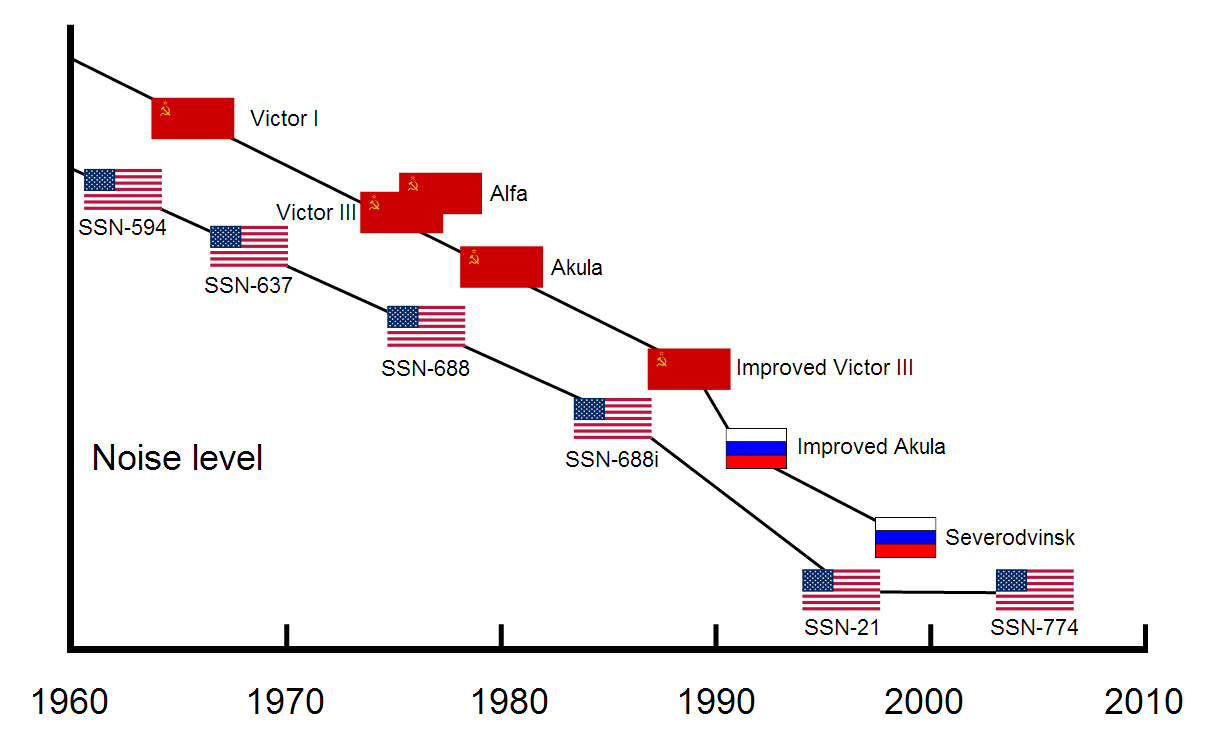The reason I’m getting all nostalgic is because I’ve been putting together my thoughts for ASPI’s Submarine Choice conference. I was pondering the fact that, if past platform lifetimes are any guide, the future submarine will still be with us 40 years from now.
I’ve written before about the exponential growth trend in computer power known as Moore’s Law. The past 40 years has seen an increase in computing power of over a million times. And, unlike the cost of military hardware, costs have trended steeply downwards as performance has soared. The next 40 years will likely see the same increase in our ability to capture, process and move information around.
If you say that fast, it seems comprehensible enough, but what we’re talking about isn’t the same increase as we’ve just experienced, it’s a million times that again. Computing power in 2054 will be a trillion times what was available in 1974. A 4G smart phone with its data capture, storage, processing and access capabilities will be as quaint an antiquity in 2054 as it was unimaginable in 1974.
It’s important to try to understand what that means for a $40 billion project. We like submarines because they have a formidable power projection capability, and can venture into even highly contested spaces, where more visible platforms can’t. If that was significantly compromised, then we’d be either looking elsewhere with our investment dollars, or at the very least rethinking how we’d design and employ submarines.
Although the past few decades have seen submarines become more effective rather than less, I think there’s a good chance that they’ll lose that stealthy edge in the future. They’ve had it so good up to now due to advances in radiated noise management, coatings and hull designs to make detection by sonar more difficult. They’ve got ahead of the detector capabilities.
But ultimately there are physical limits to what can be achieved and we’re getting into diminishing returns. Further improvements are possible, but they’ll be smaller than past ones, and likely cost more. And on the detection side, Moore’s Law is going to bring hugely increased processing power so that sorting even weak signals from noise will become faster and more reliable and hiding that much harder.
Recent submarine classes exhibit relatively modest improvements in noise management compared to previous generations. (Source: US Office for Naval Intelligence data, via Wikimedia Commons)
The other relevant trend is the development of unmanned platforms: small and relatively uncomplicated drones could be used to collect information and forward it to a powerful central processing hub. If the cost can be kept down, there could be hundreds or thousands of airborne, surface or subsurface drone-based sensor systems deployed in the choke points and littorals where diesel electric submarines are most effective. In my conference paper, I sketch some ways that might work.
That combination is likely to make sneaking large platforms into contested spaces prohibitively difficult. And it complicates life for conventional submarines even more than for nuclear boats because the littorals will be more dangerous than blue water.
I’m not the only one making those observations. USN chief ADM Greenert observed:
The rapid expansion of computing power… ushers in new sensors and methods that will make stealth and its advantages increasingly difficult to maintain above and below the water.
But technological advances tend to cut both ways, and the battle is often to the side with the right combination of technical capability and imagination. Greenert went on to say:
US forces can take advantage of those developments by employing long-range sensor, weapon, and unmanned-vehicle payloads instead of using only stealth platforms and shorter-range systems to reach targets.
Submarines will have to stand off from high-stake situations and exert their influence from a distance by deploying their own long-range remote or autonomous sensors and weapon systems. Rosie Turner’s piece earlier today suggests some future evolutions in unmanned underwater systems.
Those criteria pretty much rule out an ‘evolved Collins’, which probably can’t stretch to those requirements. That leaves us with two broad options:
- Go all out with the design of a large, fast, long-range boat that can operate at the highest level in a much more challenging future, or
- Temper our ambitions and settle for a fleet that will deliver value for money capability in less than the most challenging situations.
In other words, we have a really big decision to make right up front, and the stakes are pretty high. It’s going to be an interesting ride.
Andrew Davies is senior analyst for defence capability and director of research at ASPI. The full text of the conference talk is available here.
